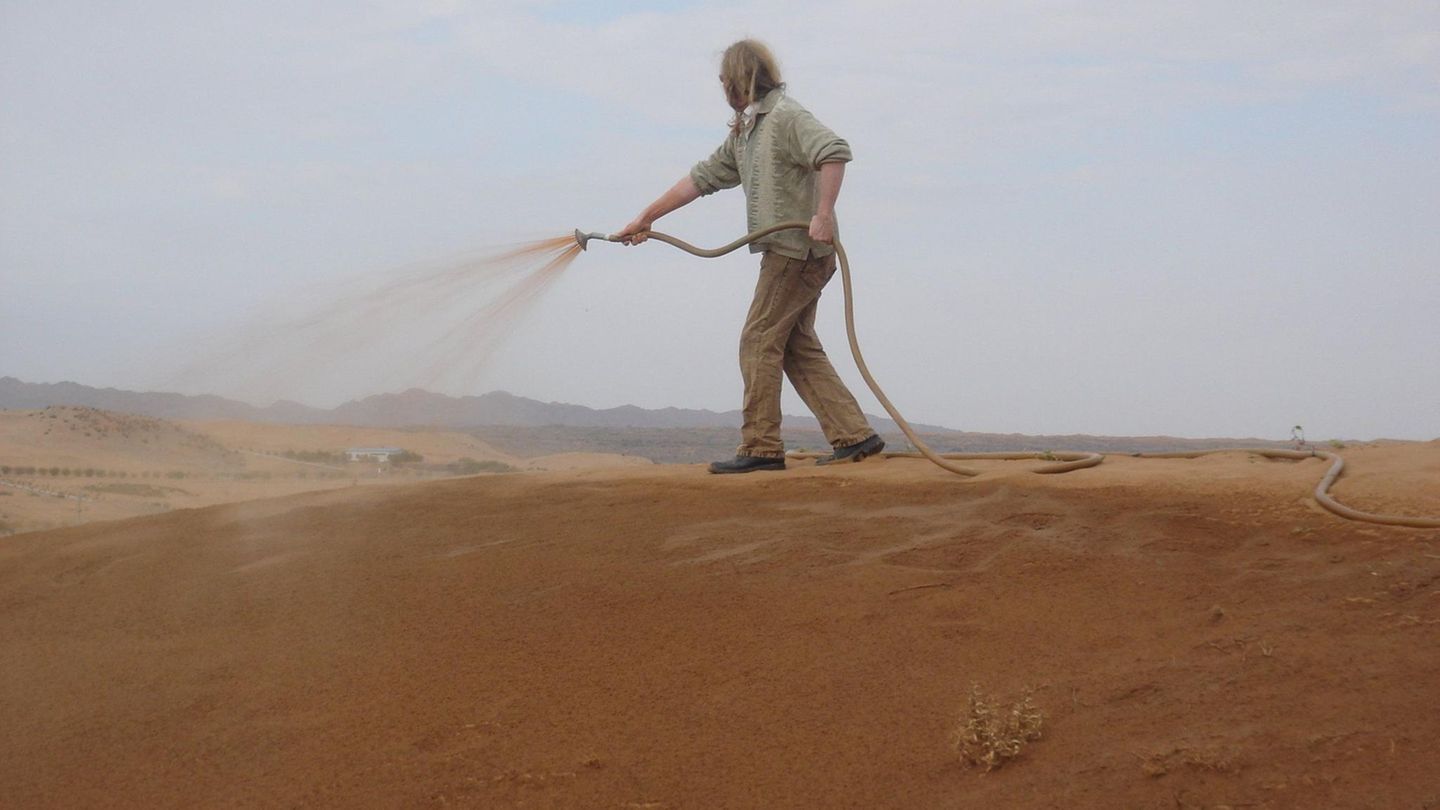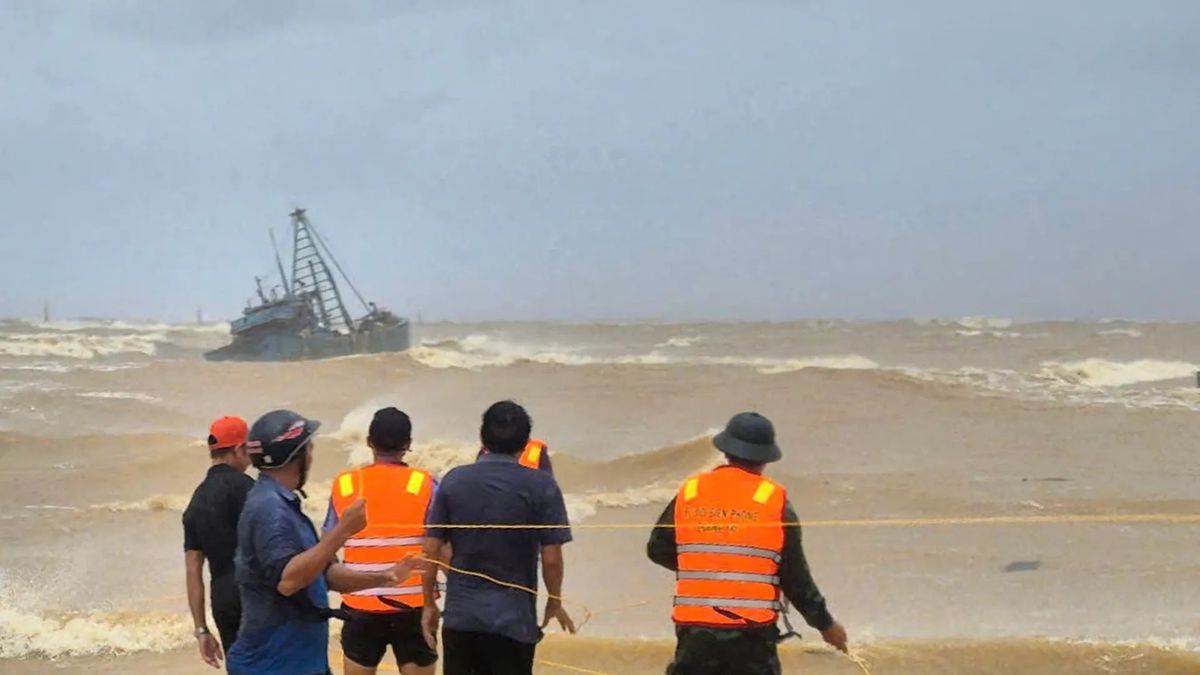The start-up Desert Control produces extremely small clay particles. When sprayed with water on sandy soil, they turn the desert into farmland in a matter of hours.
The construction of the Aswan Dam in the 1960s was an ingenious feat that would catapult Egypt into the modern age. The planners also knew that Egypt’s agriculture depended on the floods of the Nile. The dam simulated them through the controlled release of water. And yet after about ten years the harvests collapsed. The engineers hadn’t considered one thing. The floods carried not only water, but also fertile mud. It was now held back by the dam, after ten years the fields were exhausted.
This mistake led to an important discovery that is now to help turn deserts and arid areas into blooming gardens. The Nile carried not only nutrients and minerals, but also large quantities of finely ground particles of clay. They were the real secret of the fertile Nile Valley. The Norwegian company Desert Control has developed a nano-clay based on this model, which is supposed to turn deserts into gardens.
Clay enhances the floor
Ole Sivertsen, managing director of Desert Control, said the “BBC”. “Lean soils struggle to retain moisture or allow plants to thrive. Having clay in the right proportions can change that dramatically.” Loam has been used to improve soils for millennia, but when digested in, the subterranean ecosystem of the symbiotic relationship between plants and fungi is also damaged. In arid areas, it takes a long time for this system to recover from such an operation.
In the 2000s, Norwegian scientist Kristian Olesen invented a technology that turned clay into a liquid almost as thin as water. It is used by Desert Control. When this nano-clay is sprayed onto sand, this flowing consistency allows it to “trickle down and seep away”. However, it is not easy, the mixture must be precisely matched to the soil. “Unfortunately it is not the case that one mixture fits all floors,” says Sivertsen. “Ten years of trials in China, Egypt, the United Arab Emirates and Pakistan have taught us that every soil needs to be tested so that we can mix the right nanoclay formulation.”
It is important that the tiny clay particles can seep into the ground, but they must not run off again immediately. You have to enrich the fertile layer exactly 10-20 centimeters below the surface. Fortunately, soil chemistry helps with this. “Due to their chemical composition, clay particles have a negative charge, while grains of sand are positively charged,” says Sivertsen. “This natural polarity means that when they meet, they bind.”
Enlargement of the surface
The charge causes a layer of clay to form around the sand particles. Under the microscope the structure looks like a snowflake. The surface area around the grain of sand increases and water and nutrients adhere more easily. “You can apply (liquid nanoclay) with any known irrigation technique,” says Sivertsen. “You could even use a garden sprinkler.” One of the great things about the method is its speed. Only seven hours after the nanoclay has been sprayed with a mixture of water and soil particles, it can be planted. Basically, the culture must continue to be irrigated, but the use of water is much more efficient.
The scientifically monitored field test was carried out in Dubai in March 2020. Only 40 days passed from the application of the nano-clay brew on barren sandy soil to the harvest of a field with ripe watermelons. This was a significant milestone for the Emirates, which import 90 percent of all food.
Costs have to be reduced
Desert Control wants to build the production facilities for the soil improver so small that they fit into a shipping container. These mobile units are designed to produce liquid nanoclay where it is needed, using clay from the same country. The first of these mini-factories will be used in the United Arab Emirates. It should produce 40,000 liters of liquid substrate per hour. This is intended to treat the green areas in Dubai. The treatment lasts for about five years, then it has to be repeated. The only problem is the cost. They are currently around 1.50 euros per square meter. Priceless for African farmers. Desert Control hopes to bring it down to 20 cents. “If they are able to bring the price down and make it affordable for the lowest income countries, it could have a really huge impact on food security and the ability of many of those countries to use their own crops,” said Ismahane Elouafi, director general of the International Center for Biosaline Agriculture (ICBA) in Dubai.
David William is a talented author who has made a name for himself in the world of writing. He is a professional author who writes on a wide range of topics, from general interest to opinion news. David is currently working as a writer at 24 hours worlds where he brings his unique perspective and in-depth research to his articles, making them both informative and engaging.




